9 UMMA Objects
9 UMMA Objects
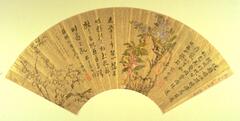
Qian Juying (Ch'ien Chü-ying)
Flowers and Plum Blossoma
1861
Museum purchase made possible by the Margaret Watson Parker Art Collection Fund
1969/1.102
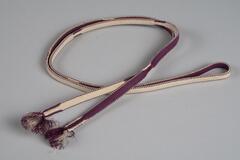
Japanese (Japanese (culture or style))
Obi jime
20th century
Gift of Howard and Patricia Yamaguchi
2013/2.449
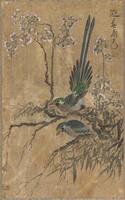
Korean (Korean (culture or style))
Birds and Flowers
19th century
Gift and partial purchase from Bruce and Inta Hasenkamp, purchase with funds from Elder and Mrs Sang-Yong Nam
2021/1.165
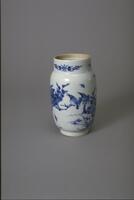
Chinese (Chinese (culture or style))
Jar
1628 – 1644
Museum purchase made possible by the Margaret Watson Parker Art Collection Fund
1975/1.82

Chinese (Chinese (culture or style))
Plum Blossoms and Rock, from the Mustard Seed Garden Manual of Painting
19th century
Museum Purchase
1955/1.68

Chinese (Chinese (culture or style))
Clear Stream with Prunus, after Huang Chu-ts'ai
16th century
Gift of the Estate of Agnes E. Meyer
1971/2.109
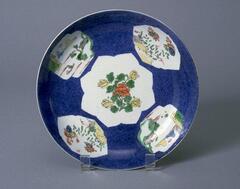
Chinese (Chinese (culture or style))
Dish
1700 – 1722
Gift of the Estate of Hobart Taylor, Jr.
1982/1.213
!["The panels of these screens alternate human figures and plants. The figures illustrate various activities of the scholar's life."<br />
On the first panel of the right screen, "a rotund scholar sits on the ground viewing the waterfall described in the poem ["Requesting Ts'ui Shan-jen's Painting of the Waterfall at the Thousand-foot Cliff" by Li Po], while his young assistant, who is holding the painting up on a rod, peeps around the edge of the scroll. "<br />
"The next panel has a bold composition of flowering plum branches. The wide brush strokes of the limbs are typical of Taiga's technique  "The panels of these screens alternate human figures and plants. The figures illustrate various activities of the scholar's life."<br />
On the first panel of the right screen, "a rotund scholar sits on the ground viewing the waterfall described in the poem ["Requesting Ts'ui Shan-jen's Painting of the Waterfall at the Thousand-foot Cliff" by Li Po], while his young assistant, who is holding the painting up on a rod, peeps around the edge of the scroll. "<br />
"The next panel has a bold composition of flowering plum branches. The wide brush strokes of the limbs are typical of Taiga's technique ](/media/W1siZiIsIjIwMjIvMDUvMjUvMnk3OXcxNmxxdl9kZWZhdWx0LmpwZyJdLFsicCIsInRodW1iIiwiMjQweDIwMCJdXQ?sha=25db4f350ba58e45)
Ikeno Taiga
Scholarly Occupations and The Three Friends (Pine, Plum, Bamboo)
18th century
Museum purchase made possible by the Margaret Watson Parker Art Collection Fund
1961/1.175
Loading…

